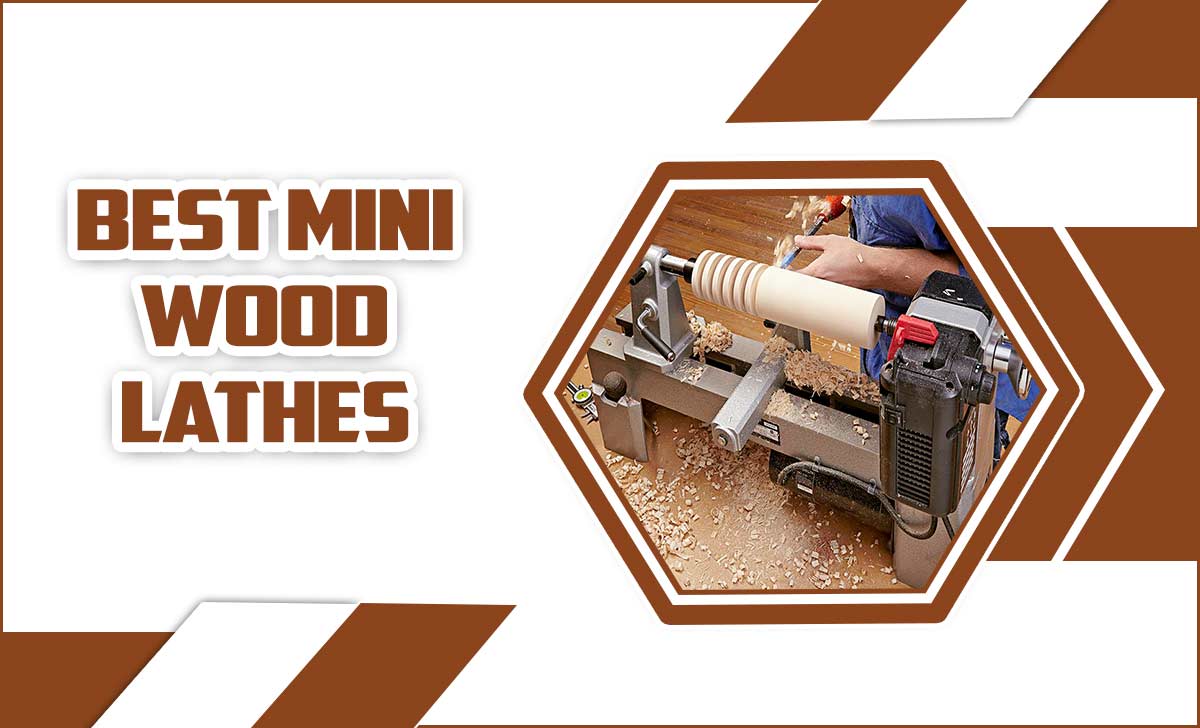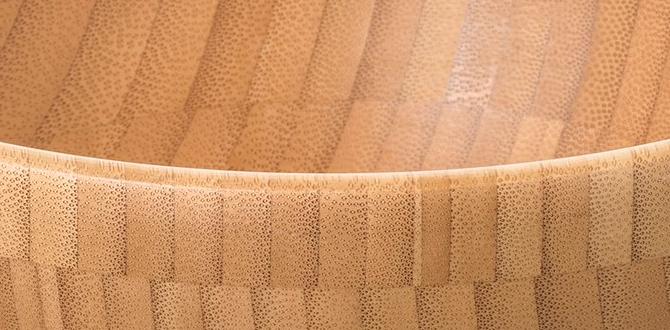A 1/8-inch carbide end mill is excellent for machining polycarbonate, offering precision and clean cuts. Properly selected and used, it provides a reliable solution for hobbyists and professionals working with this versatile plastic.
Working with polycarbonate can sometimes feel tricky, especially when you need precise cuts. Many beginners find that standard cutting tools can melt or chip the plastic, leading to frustrating results. This is where the right end mill makes all the difference. If you’re aiming for smooth edges and accurate features on your polycarbonate projects, a 1/8-inch carbide end mill is a proven choice. It’s designed to handle plastics effectively. In this guide, we’ll walk you through why this specific tool works so well and how to use it for great results. Get ready to achieve those crisp, clean cuts you’ve been looking for!
Why a 1/8-Inch Carbide End Mill is Ideal for Polycarbonate
Polycarbonate, often known by brand names like Lexan or Makrolon, is a wonderfully strong and transparent plastic. It’s used in everything from safety glasses and machine guards to automotive lighting and electronic enclosures. However, its excellent impact resistance comes with a downside: it can be prone to melting when machined if the wrong tools or settings are used. This is where a specific type of cutting tool, the carbide end mill, shines.
A 1/8-inch carbide end mill is a popular choice for several key reasons:
- Material Properties: Carbide is much harder and more heat-resistant than high-speed steel (HSS). This means it can cut through polycarbonate cleanly without generating enough heat to melt the plastic.
- Size and Precision: The 1/8-inch diameter is perfect for creating fine details, small slots, and intricate patterns often required for polycarbonate parts. This size allows for tight tolerance machining.
- Chip Evacuation: Many carbide end mills designed for plastics feature specific flute geometries that help clear chips efficiently. This prevents them from packing up, which is a major cause of melting.
- Durability: Carbide tools last significantly longer than HSS tools when cutting plastics, meaning fewer tool changes and more consistent results over time.
Understanding Carbide End Mills
Carbide, specifically tungsten carbide, is an extremely hard compound formed by bonding tungsten with carbon atoms. Its hardness is second only to diamond. Tools made from carbide boast superior wear resistance and can maintain their cutting edge at higher temperatures than traditional steels. For machining plastics like polycarbonate, this is crucial.
When selecting a carbide end mill for polycarbonate, look for:
- Two Flutes: Generally, end mills with fewer flutes (like two or three) perform better in plastics. More flutes can lead to chip packing and overheating. Two-flute end mills are particularly good at evacuating chips.
- Polished or Bright Finish: A highly polished flute surface reduces friction and prevents plastic chips from sticking to the cutter. This minimizes heat buildup.
- Up-cut or straight flutes: Up-cut flutes help lift chips out of the cut, while straight flutes offer a balance of cutting action and chip evacuation. For polycarbonate, options that prioritize chip evacuation are often best.
- Specific Plastic Formulations: Some end mills are specifically coated or designed with geometries optimized for plastics. While not always essential for polycarbonate, they can offer an advantage.
The term “1/8 Inch” refers to the cutting diameter of the mill. The “1/4 Shank” is the diameter of the part of the tool that goes into the milling machine’s collet. This is a very common size combination for CNC routers and milling machines, making it readily available.
Choosing the Right 1/8-Inch Carbide End Mill for Polycarbonate
Not all carbide end mills are created equal, and choosing the right one for polycarbonate is a small but important step. When searching for your tool, you might see descriptions like “1/8 inch carbide end mill 1/4 shank standard length for polycarbonate tight tolerance.” Let’s break down what makes a good choice for this specific application:
Key Features to Look For:
- Single or Double Flute: For polycarbonate, a single or double-flute end mill is generally preferred. Fewer flutes lead to larger chip valleys, allowing chips to escape more easily. This prevents heat buildup and melting.
- Plastic-Specific Geometry: Some end mills are designed with a higher rake angle and polished flutes specifically for cutting plastics. These are ideal.
- Uncoated vs. Coated: For polycarbonate, uncoated, polished carbide is often sufficient and a good starting point. Coatings like TiN (Titanium Nitride) can add hardness and reduce friction further, but they can also increase cost. For basic polycarbonate machining, a bright, polished finish is the most critical feature.
- Shear Angle: A slight shear angle can help the tool engage the material smoothly, reducing chatter and improving surface finish.
- Standard Length: A standard length is usually fine unless you need to reach very deep into a part. For most general-purpose polycarbonate machining, standard dimensions are perfectly adequate.
Recommended End Mill Types for Polycarbonate:
When delving into the specifics, you’ll often find these types of mills recommended:
| End Mill Type | Description | Why It Works for Polycarbonate |
|---|---|---|
| Single Flute, Straight/Up-cut | Features one cutting edge and spirals to clear chips. The up-cut action pulls chips out of the cut. | Excellent chip evacuation is paramount for plastics. This design minimizes melting by clearing hot chips quickly. |
| Double Flute, Straight/Up-cut | Features two cutting edges. Offers a balance between cutting efficiency and chip clearance. | A good all-around choice that provides more cutting action than a single flute while still offering decent chip evacuation. |
| Compression End Mill (Less Common for Polycarbonate) | Designed with both up-cut and down-cut flutes to create a smooth finish on both the top and bottom surfaces. | While excellent for some plastics, the chip evacuation might be less aggressive than dedicated single or double flute designs. Can be useful for finishing passes. |
For beginners focused on polycarbonate, starting with a high-quality 1/8-inch, 2-flute, up-cut, polished carbide end mill is a safe and effective bet. This combination offers good cutting action and superior chip evacuation.
Setting Up Your Machine and Workpiece
Before you even think about cutting, proper setup is essential for success and safety. This applies whether you’re using a CNC router, a manual milling machine, or even a specialized plastic cutting setup.
Securing the Polycarbonate:
Polycarbonate needs to be held firmly to prevent vibration, which can lead to poor cut quality, tool breakage, or an unsafe machining environment. Any movement during the cut will be disastrous.
- Use Clamps: T-slot clamps, edge clamps, or custom fixtures are ideal for holding the material securely to the machine bed. Ensure clamps are positioned to avoid interfering with the cutting path.
- Machine Vise: For smaller pieces, a milling machine vise can be used, but ensure soft jaws are used to prevent marring the polycarbonate.
- Double-Sided Tape: For very light cuts or prototyping, strong double-sided tape can sometimes work, but it’s less secure than mechanical clamping.
- Workholding Aids: Consider spoilboards or sacrificial layers to provide a flat, stable surface and to protect your machine bed.
Machine Spindle and Collet Setup:
A clean, properly tightened collet is vital for any milling operation. A loose tool can lead to runout, chatter, and tool breakage.
- Clean Everything: Ensure the collet and the spindle taper are free of dust, debris, or any residue.
- Correct Collet Size: For a 1/8-inch shank end mill, you need a 1/8-inch collet. Using an adapter or a slightly larger collet can lead to runout.
- Proper Tightening: Securely tighten the collet nut. The tool should be held firmly with minimal wobble.
Coolant/Lubrication (Optional but Recommended):
While some users machine polycarbonate dry, using a lubricant or coolant can significantly improve results by reducing heat and aiding chip evacuation. This is especially true for high-volume production.
- Mist Coolant Systems: These systems spray a fine mist of coolant (often a water-soluble oil mixed with water) onto the cutting area. They are highly effective for plastics.
- Cutting Fluid: A specialized plastic cutting fluid can be applied manually or through a pump system. Look for fluids designed not to embrittle or cloud the polycarbonate.
- Compressed Air: A blast of compressed air can help blow chips away and cool the cutting zone. This is a common method on CNC routers.
Always check the Material Safety Data Sheet (MSDS) for any coolant or lubricant you use. For detailed information on machining plastics, resources from organizations like the National Institute of Standards and Technology (NIST) often provide valuable data on material properties and machining best practices.
Machining Parameters: Speed, Feed, and Depth of Cut
This is where understanding the specific needs of polycarbonate comes into play. Getting the speeds and feeds right is crucial to avoid melting and achieve a clean finish. Polycarbonate is a bit softer and more prone to heat buildup than many metals.
Spindle Speed (RPM):
Spindle speed refers to how fast the end mill rotates. For polycarbonate, you generally want a moderate to high spindle speed.
- General Range: For a 1/8-inch carbide end mill, speeds between 15,000 and 25,000 RPM are common, especially on CNC routers. Manual machines may operate at lower RPMs (e.g., 3,000-6,000 RPM), and adjustments for feed rate will be necessary.
- Why Higher Speeds? Higher RPMs allow the end mill to cut chips more quickly, creating smaller chips. This means less material is being deformed by each cutting edge, and less heat is generated in the workpiece.
- The Trade-off: Extremely high speeds can still generate heat if the feed rate isn’t matched.
Feed Rate (IPM or mm/min):
Feed rate is how fast the cutting tool travels through the material. For polycarbonate, this is critical. Too fast, and you’ll melt; too slow, and you’ll also melt (due to friction). You’re looking for the “sweet spot” where you’re making clean chips.
- General Range: For a 1/8-inch 2-flute end mill, feed rates can range from 15 to 30 inches per minute (IPM) or roughly 380 to 760 mm/min. This is a starting point, and adjustments are often needed.
- Chip Load: Machinists often think in terms of “chip load,” which is the thickness of the material removed by each cutting edge per revolution. For plastics, a light chip load is desirable. For a 1/8-inch, 2-flute carbide end mill, a chip load of 0.002″ to 0.004″ is a good starting point.
- Listen and Observe: The sound of the cut and the appearance of the chips are your best indicators. You want a light, crisp cutting sound. If you hear rubbing or if the chips are stringy and melting, your feed rate is likely too slow or your spindle speed too low. If chips are not forming, your feed rate might be too high for the spindle speed.
Depth of Cut (DOC) and Stepover:
These parameters determine how much material is removed in each pass.
- Depth of Cut (DOC): For full slotting (cutting a slot the full width of the end mill), start conservatively. A depth of cut equal to the end mill’s diameter (1/8 inch or 3.175 mm) is often a good starting point for 2-flute tools. For pocketing, you can usually go deeper, but it’s always wise to start shallower and increase if results are good. For aggressive cuts, you might achieve optimising these parameters can significantly impact tool life and finish.
- Stepover: This is the distance the tool moves sideways between overlapping cutting paths (e.g., when milling the perimeter of a pocket). For a good surface finish and to avoid leaving witness lines, a stepover of 30-50% of the tool diameter is common. A smaller stepover (e.g., 10-20%) will yield a smoother finish but take longer.
Example Machining Parameters (Starting Point):
Below is a table with example parameters for a 1/8-inch, 2-flute, up-cut carbide end mill in polycarbonate on a typical desktop CNC router. These are starting points and will need adjustment based on your specific machine, rigidity, and coolant.
| Parameter | Suggested Value | Notes |
|---|---|---|
| Spindle Speed (RPM) | 18,000 – 24,000 RPM | Higher speeds generally better for chip formation. |
| Feed Rate (IPM) | 20 – 25 IPM (approx. 500-635 mm/min) | Listen for a light, crisp cut. Adjust up or down. |
| Chip Load per Flute (inch/flute) | 0.002″ – 0.003″ | Ensures small, manageable chips. |
| Depth of Cut (Full Slotting) | 0.125″ (3.175 mm) | Start here and observe. |
| Depth of Cut (Pocketing) | 0.250″ – 0.375″ (6.35 – 9.5 mm) per pass | Can often go deeper in pockets than full slots. |
| Stepover (for Pocketing) | 30% – 50% of diameter (0.0375″ – 0.0625″) | For balance of finish and speed. |
| Plunge Rate | 1/2 to 1/3 of feed rate (e.g., 8 – 12 IPM) | Plunge slower to avoid heat buildup on entry. |
Remember, these are guidelines. Always perform test cuts on scrap material first. If the plastic starts to melt or gum up, slow down your feed rate or increase your spindle speed. If you encounter chatter or a rough finish, adjust your feed rate or depth of cut.
Step-by-Step Machining Process
Now that you have your tool, your machine set up, and your parameters in mind, let’s walk through the actual machining process. Following these steps will help ensure safe and successful machining of polycarbonate.
Step 1: Secure Your Material
As discussed earlier, firmly clamp your piece of polycarbonate to the machine bed. Ensure it cannot move at all during the machining process. Double-check that clamps are out of the path of the end mill.
Step 2: Install the End Mill
Insert the 1/8-inch carbide end mill into a clean collet and install the collet into the spindle. Ensure it’s tightened securely. Do not overtighten, but ensure there’s no wobble.
Step 3: Set Your Work Zero (Origin)
This is a critical step for CNC machining. You need to tell the machine where the workpiece is located in 3D space.
- X and Y Axis: Typically, you’ll set the origin at a corner of your part or at the center. Use a probe, an edge finder, or manually jog the machine to the desired starting point and set the X and Y zeros.
- Z Axis: Set the Z-zero usually at the top surface of your workpiece. You can use a Z-probe, a touch plate, or carefully lower the end mill until it just touches the surface.
For manual machining, this step involves finding your reference points using dialing indicators or other methods before starting the cut.





